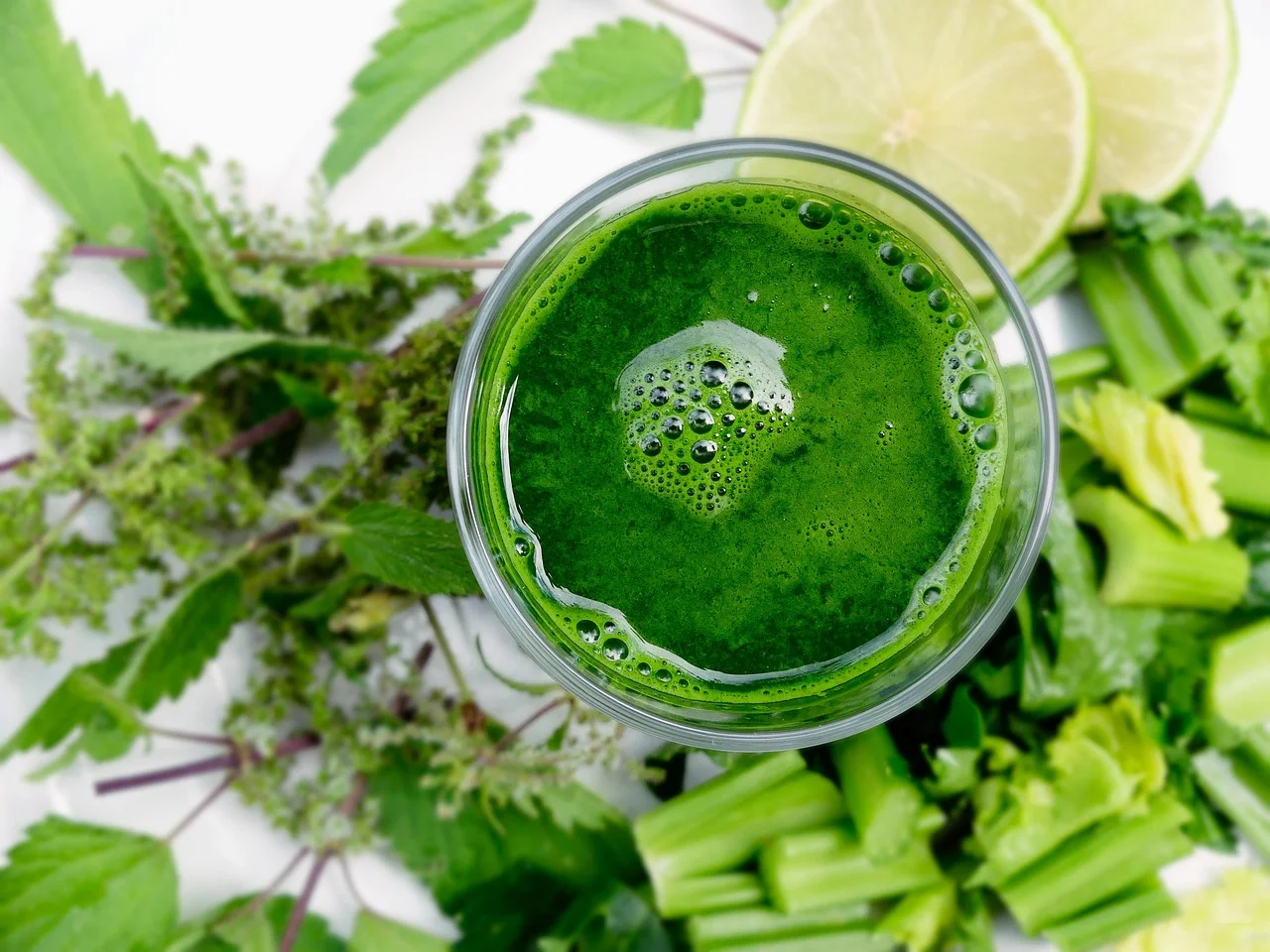Gastric sleeve surgery marks a significant health commitment, requiring careful post-operative dietary management. Bariatric smoothie recipes for gastric sleeve patients are crucial for optimal recovery. These nutrient-dense blends support healing, prevent deficiencies, and aid weight loss, accommodating digestive changes. This guide offers authoritative advice on creating effective smoothies, ensuring patients obtain essential nutrients for a successful recovery and lasting health. Understanding these recipe principles is vital for post-surgical nutrition.
Table of Contents
Understanding the Post-Gastric Sleeve Diet
The gastric sleeve procedure, medically known as sleeve gastrectomy, involves surgically removing approximately 75-80% of the stomach, leaving a smaller, banana-shaped pouch. This significantly reduces the stomach’s capacity, leading to earlier satiety and reduced calorie intake. However, this alteration also imposes strict dietary requirements to prevent complications, ensure adequate nutrition, and support the body’s healing process. The post-operative diet typically progresses through several stages: clear liquids, full liquids, pureed foods, soft foods, and finally, a solid diet. Smoothies play a crucial role during the full liquid and pureed stages, offering a safe and effective way to consume essential nutrients without overwhelming the sensitive digestive system.
The Importance of Protein
Protein is the cornerstone of the bariatric diet, especially after gastric sleeve surgery. It is fundamental for tissue repair, muscle preservation, and satiety. Patients are often advised to consume 60-80 grams of protein daily, a challenging target with a reduced stomach capacity. Smoothies provide an excellent vehicle for concentrated protein intake, incorporating high-quality sources such as protein powder, Greek yogurt, cottage cheese, or tofu. Ensuring sufficient protein intake is critical to prevent muscle mass loss, which can occur rapidly during significant weight reduction, and to support the accelerated healing process of surgical wounds. Without adequate protein, recovery can be prolonged, and the risk of complications may increase.
Essential Vitamins and Minerals
Beyond protein, bariatric patients face an elevated risk of micronutrient deficiencies due to reduced food intake and, in some cases, altered absorption. Therefore, incorporating fruits, vegetables, and fortified liquids into smoothie recipes is vital to supply essential vitamins and minerals. Specific attention should be paid to Vitamin D, Vitamin B12, Iron, Calcium, and Folic Acid, as deficiencies in these are commonly observed. While supplements are often necessary, nutrient-dense smoothies contribute significantly to overall micronutrient intake, enhancing general well-being and mitigating potential long-term health issues.
Designing Your Bariatric Smoothie Recipes for Gastric Sleeve
Crafting effective bariatric smoothie recipes for gastric sleeve requires careful consideration of ingredients, portions, and nutritional balance. The primary goal is to maximize nutrient density while minimizing caloric load and avoiding ingredients that may cause discomfort. A well-designed smoothie should be high in protein, low in sugar, and easily digestible. Patients are often encouraged to experiment with different combinations to find what works best for their individual taste and tolerance, always adhering to dietary guidelines provided by their healthcare team.
Core Components of a Bariatric Smoothie
Each smoothie should ideally include:
- A Protein Source: 1-2 scoops of unflavored or naturally flavored protein powder (whey isolate, casein, plant-based), 1/2 to 1 cup Greek yogurt, 1/2 cup cottage cheese, or 1/4 cup silken tofu.
- A Liquid Base: 1/2 to 1 cup unsweetened almond milk, skim milk, soy milk, unsweetened coconut water, or water.
- Fruits/Vegetables (Optional, depending on stage): Small amounts of low-sugar fruits like berries (strawberries, blueberries), or pureed cooked vegetables like spinach, zucchini, or butternut squash. Always ensure thorough blending to avoid lumps.
- Healthy Fats (Optional): 1/4 of an avocado, 1 tablespoon of chia seeds or flax seeds (ensure finely ground if in early stages for easier digestion).
- Flavor Enhancers (Sugar-Free): A dash of cinnamon, vanilla extract, sugar-free cocoa powder, or a few drops of liquid stevia.
The Role of Extensive Clinical Research
Extensive clinical research and established bariatric guidelines consistently emphasize the critical role of structured nutritional intake following gastric sleeve surgery. A review published in *Endocrine Practice* highlights that adherence to high-protein, low-carbohydrate diets, often facilitated by nutrient-dense liquids like properly formulated smoothies, is paramount for minimizing post-operative complications and ensuring effective weight loss. These guidelines underscore that maintaining adequate protein intake is crucial for preserving lean body mass, accelerating wound healing, and managing satiety, thereby preventing nutrient deficiencies and supporting the body’s metabolic adaptations. This scientific backing reinforces the necessity of including well-designed bariatric smoothie recipes for gastric sleeve in the dietary protocol to achieve optimal outcomes.
Sample Bariatric Smoothie Recipes
These recipes are designed to be high in protein and nutrients, suitable for the pureed and soft food stages after gastric sleeve surgery. Always consult with your dietitian before introducing new foods.
High-Protein Berry Blast
- 1 scoop unflavored whey protein isolate
- 1/2 cup unsweetened almond milk
- 1/4 cup mixed berries (fresh or frozen)
- 2 tablespoons plain non-fat Greek yogurt
- Ice (optional, for desired consistency)
Blend all ingredients until completely smooth. This smoothie offers a potent dose of protein and antioxidants, crucial for recovery.
Green Goddess Power Smoothie
- 1 scoop vanilla protein powder (low sugar)
- 1/2 cup unsweetened skim milk or soy milk
- 1/2 cup fresh spinach
- 1/4 cup cooked zucchini (chilled)
- 1/4 avocado
Blend thoroughly until no chunks remain. This blend maximizes nutrient intake with hidden vegetables and healthy fats, aiding satiety and micronutrient absorption. It’s an excellent example of bariatric smoothie recipes for gastric sleeve that prioritizes nutrient density.
Chocolate Peanut Butter Dream (Sugar-Free)
- 1 scoop chocolate protein powder (low sugar)
- 1/2 cup unsweetened almond milk
- 1 tablespoon natural peanut butter powder (or 1 tsp creamy natural peanut butter, sparingly)
- 1/2 tablespoon chia seeds (finely ground)
- Ice (optional)
This recipe offers a satisfying flavor profile while adhering to bariatric dietary needs. Remember to use peanut butter powder as it has significantly less fat and calories, or use a very small amount of creamy natural peanut butter, ensuring it’s well-tolerated.
Practical Tips for Bariatric Smoothies
Successful integration of smoothies into your post-operative diet involves more than just selecting ingredients. Preparation, consumption habits, and awareness of your body’s signals are equally important.
Preparation and Storage
- Batch Preparation: Prepare smoothie packs in advance by portioning dry ingredients (protein powder, seeds, frozen fruit) into individual bags. When ready to consume, simply add the liquid base and blend.
- Proper Blending: Use a high-powered blender to ensure a completely smooth, lump-free consistency. Any undissolved solids can cause discomfort or lead to blockages in the newly reconfigured stomach. This is particularly crucial during the initial liquid and pureed stages.
- Chilling: Chilling ingredients beforehand can enhance the taste and consistency of your smoothies. Avoid adding excessive ice if it thins the smoothie too much or causes stomach discomfort.
Consumption Guidelines
- Sip Slowly: Never gulp your smoothies. Sip them slowly over 20-30 minutes to avoid overwhelming your smaller stomach pouch. Rapid consumption can lead to dumping syndrome, nausea, or discomfort.
- Hydration First: Ensure you are consuming adequate plain water between meals. Liquids consumed with meals can fill up the stomach quickly, leaving less room for nutrient-dense foods. Adhere to the strict no-drinking-with-meals rule.
- Listen to Your Body: Pay close attention to how your body reacts to different ingredients. If a particular ingredient causes discomfort, eliminate it and consult with your dietitian.
Avoiding Common Pitfalls
While smoothies are beneficial, certain mistakes can undermine their effectiveness or lead to adverse effects for bariatric patients.
High Sugar Content
Many commercially available smoothies or those made with excessive fruit can be very high in sugar. This can lead to dumping syndrome, characterized by nausea, cramping, and diarrhea. Always opt for low-sugar fruits like berries and use sugar-free liquid bases and flavorings. Check nutrition labels carefully.
Insufficient Protein
Failure to include adequate protein is a common error. A smoothie that is predominantly fruit and juice will not provide the necessary satiety or muscle support. Prioritize protein as the primary macronutrient in every blend.
Thick Consistency
While a thick smoothie can feel more filling, overly thick blends can be difficult to digest and may cause blockages. Aim for a pourable, yet substantial consistency that is easy to sip and swallow. For individuals considering a Gastric Bypass in Turkey, similar principles regarding liquid and pureed stages apply, with individual modifications based on the specific procedure.
Overconsumption
Even healthy smoothies contribute calories. While nutrient-dense, consuming excessive amounts can hinder weight loss. Adhere strictly to portion sizes recommended by your bariatric team. Typically, portions range from 4-6 ounces per serving in the early stages.
CK Health Turkey: Your Partner in Bariatric Health
At CK Health Turkey, we understand the complexities of the bariatric journey, from initial consultation through to long-term dietary management. We are dedicated to providing comprehensive support to international patients, offering world-class bariatric surgery services, including advanced Gastric Sleeve in Turkey procedures. Our team of experienced surgeons, dietitians, and patient coordinators ensures a seamless and supportive experience, focusing on your safety, comfort, and successful outcomes. We recognize that effective post-operative nutrition, including the strategic use of bariatric smoothie recipes for gastric sleeve patients, is pivotal for recovery and sustained weight loss.
For patients who may experience post-operative complications, we also provide guidance and treatment options for issues such as Gallbladder Issues: Navigating Post-Sleeve Complications, ensuring holistic care. Our commitment extends to educating and empowering our patients with the knowledge and tools needed for a healthy lifestyle post-surgery. We pride ourselves on delivering exceptional medical care combined with unparalleled patient support. Take the first step towards a healthier future. Contact CK Health Turkey today to schedule a consultation and learn more about how we can support your weight loss journey.
Comparison of Smoothie Types for Bariatric Patients
Understanding the distinct roles of various smoothie types can help tailor your nutritional intake to specific post-operative needs and stages. This table provides a clear overview:
| Factor | High-Protein Smoothies | Vitamin-Rich Smoothies | Fiber-Boosted Smoothies |
|---|---|---|---|
| Primary Goal | Muscle preservation, satiety | Micronutrient intake | Digestive health, fullness |
| Key Ingredients | Protein powder, Greek yogurt | Fruits, vegetables, fortified milk | Chia seeds, flax seeds, leafy greens |
| Post-Op Phase | All phases (critical early on) | Later pureed/soft phases | Later pureed/soft phases (monitor tolerance) |
| Benefit | Prevents muscle loss, aids healing | Boosts immunity, energy | Regulates bowels, sustained satiety |
The effective use of these distinct smoothie types can significantly enhance recovery and long-term health outcomes for bariatric patients.
FAQs
When can I start consuming smoothies after gastric sleeve surgery?
Typically, smoothies are introduced during the full liquid or pureed stages, usually 1-3 weeks post-surgery. This timeline is subject to your surgeon’s and dietitian’s specific instructions, which may vary based on your individual recovery progress.
How much protein should be in each bariatric smoothie?
Each bariatric smoothie should aim to provide at least 15-20 grams of protein per serving. This helps meet your daily protein targets of 60-80 grams and supports muscle preservation and healing.
Can I use fresh fruit in my bariatric smoothies?
Yes, fresh fruit can be used, but choose low-sugar options like berries in moderation. Ensure all ingredients are thoroughly blended to a smooth consistency to avoid any digestive discomfort.
Are store-bought smoothies acceptable for gastric sleeve patients?
Generally, no. Most store-bought smoothies are high in sugar and calories, lacking the precise protein and nutrient balance required for bariatric patients. It is best to prepare your own using approved ingredients.
What should I do if a smoothie causes me discomfort?
If a particular smoothie or ingredient causes discomfort (e.g., nausea, pain, dumping syndrome), discontinue its use immediately. Review the ingredients and consistency, and consult with your dietitian to identify and adjust the problematic component.
How often should I consume bariatric smoothies?
Smoothies can serve as meal replacements or high-protein snacks, depending on your dietary stage and individual needs. Your bariatric team will provide a specific meal plan indicating frequency and portion sizes, often recommending 2-3 smoothies per day in the initial stages.
Can I add sweeteners to my smoothies?
Artificial sweeteners or sugar substitutes (e.g., stevia, erythritol) can be used sparingly to enhance flavor without adding sugar. Avoid high-fructose corn syrup or regular sugar, which can trigger dumping syndrome.
Why is it important to blend ingredients very smoothly?
A perfectly smooth consistency is crucial to prevent irritation or blockage of the smaller stomach pouch. Lumps or undigested fibers can cause pain, nausea, or vomiting in bariatric patients.
Can I make large batches of smoothies and store them?
Yes, you can prepare larger quantities and store them in airtight containers in the refrigerator for up to 24-48 hours. For longer storage, freeze portions in ice cube trays or freezer-safe bags, then thaw and blend with a little liquid before consumption.
What if I don’t like protein powder in my smoothies?
If protein powder is not palatable, explore other high-protein ingredients like plain Greek yogurt, cottage cheese, silken tofu, or egg whites (cooked and pureed). There are also various types of protein powders (whey, casein, soy, pea) which may have different tastes and textures.



